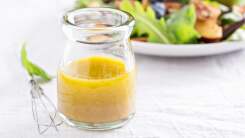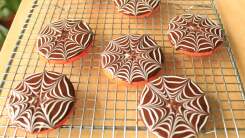When and How to Strain Your Dishes
Straining can play an important role in cooking. A velvety, lump-free, custard is a dreamy experience, a perfectly clear consommé is gorgeous and flavorful, and smooth gravies and creamy sauces can make or break a meal. But there’s a difference between straining and saving. The former is a proper culinary technique; the latter, a culinary Hail Mary.
Straining ingredients that finished their job
Straining, in general, is the act of separating a thinner, looser component from clumpy or larger solid ingredients in a recipe. An exaggerated version of this is dumping pasta into a colander. The hot water runs out of the holes while the pasta stays in. The refined version usually involves a sieve, cheesecloth, or other fabric. You can strain out anything from herbs to small shreds of meat using a sieve. With some recipes, straining is the technically sound way to achieve perfection, and it’s usually explicitly listed as a step in the procedure.
For a consommé, it is essential that you strain the soup through a fine cloth to remove any remaining specks of egg white. In some lemon and lime curd recipes, the custard is cooked with small shreds of zest from the fruit. You can leave the zest in, but if you want an uninterrupted, silky curd you can run it through a fine mesh strainer before cooling. The same is true with the cereal in cereal milk pie. In all of these instances, the material being removed has already done its business. The egg white raft has coagulated around undesirable blemishes in the consommé, the lime zest has imparted its oils, the cereal’s flavors have shifted from the morsel to the milk. They’re done, take them out.

Straining out a few lumps
Anything outside of that, and straining starts to become a safety net. That’s ok, lumps happen. But when does, “Oops, my gravy has some cornstarch bits,” or “Oh no, I stirred the pudding occasionally instead of constantly,” need not mean it’s time to start over. Sometimes even our tried and true recipes reveal a stray blob, even when we worked really hard to make things perfect. In these times, straining out a few irregularities is totally fine. Small bits of egg coagulate is even expected in some recipes, like Crème Anglaise. However, this doesn’t mean you should approach custards and thickened sauces with a devil-may-care attitude.
Straining won’t fix a neglected custard
In culinary school, I was taught that you shouldn’t need to strain custards. The reason (besides ego inflation when you do it well) is that the thickening agents you add to custards, soups, and sauces are intended to stay in the mix. Unlike the perfectly strainable examples of zests and herbs that I mentioned before, egg yolks, cornstarch, flour, and other thickeners are specifically measured ingredients because every gram of it is supposed to be part of the finished product.
If you’re worried that your pastry cream has a few fine specks of egg yolk in it, it’s perfectly fine to run it through a strainer as a safeguard to ensure the final product is flawless. However, if you left your crème anglaise on the stove while switching out your laundry and returned to find the mixture has clumped to the bottom, you can’t strain it back into order. Essentially you would be straining out the egg that you added in as a thickener and enriching agent, removing a vital ingredient from your custard. At this point, you must start over. I know that’s hard to hear. I’m so sorry.
How to prevent lumps
The best way to prevent clumpy mishaps is to follow the recipe carefully. Most recipe authors are very intentional with their wording. Anything that involves tempering eggs means constant stirring over low, gentle heat. Eggs cook at 144°F, so you won’t be stirring for long. If the roux for your bechamel sauce says to use a whisk, grab a whisk; don’t wing it with a spoon. Read recipes ahead of time to see if a strainer will be needed. Strain out ingredients that have finished making their contribution, but do everything you can to keep the thickeners as part of the solution.
RECOMMENDED NEWS

Absolutely Do Not Cook This Goose
I suffer from Marty McFly syndrome. Someone says a thing can’t be done, and I’ve already checked out...

Give Your Veggies a Hot-Wing Vibe With This Buffalo Vinaigrette
Though they’re by far the most popular, wings aren’t the only thing you can Buffalo. Buffalo caulifl...

10 Ways to Make a 'Special Salad Dressing,' According to Lifehacker Readers
I rarely dive into the discourse, but last week I had to, because the discourse was centered around ...

How to ‘Spiderweb’ Your Halloween Desserts
Knowing how to make horrific desserts is an essential skill during the month of October, especially ...

My Favorite Christmas Canapé Starts With a Can of Salmon
Canned fish has been chic for a few years now, but the chicness mostly extends to whole, preserved f...

How to Make Tomato Ranch, the Ranch of the Summer
My refrigerator is broken. Not broken in a way that cannot be fixed, but broken in a way that requir...
Comments on "When and How to Strain Your Dishes" :